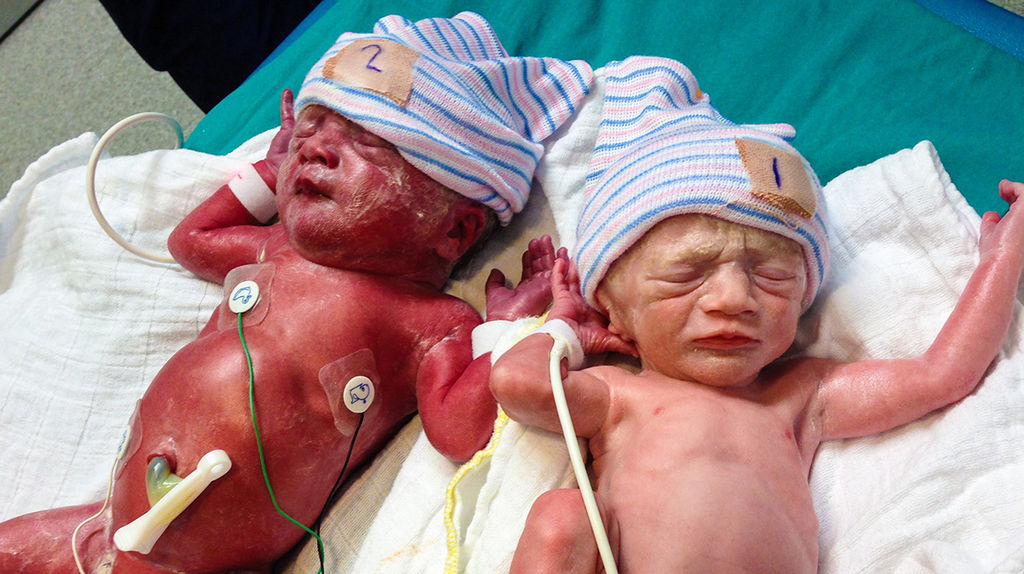The story of Stephanie
At 10 weeks pregnant, I can still remember the look on my ultrasound technician’s face. “They told you you were having a baby? ” Well, here it is! And … here’s the other one! It’s twins!
I was shocked. Well, that’s an understatement. We had no history of twins (although identical twins are not proven to be hereditary yet 😉 ), and this was a great surprise.
The pregnancy progressed with a few hiccups like a shortened cervix and some pretty severe morning sickness. It really wasn’t until my 23rd week that things got bad, fast.
I went to a routine checkup and was told that my twins had developed Stage 1 Twin to Twin Transfusion Syndrome. The fluid level for my donor was 1 cm, for the recipient twin, 10.5 cm. We were rushed to The Leiden University Medical Centre in the Netherlands for a second opinion, and this was confirmed.
The next week we were monitored closely, and the fluid levels balanced out to levels that meant we were no longer on TTTS watch. But our team in Leiden were watching something else in the background – a disease rarer than TTTS, that has no visible symptoms, and can only be reliably detected via MCA Dopplers. This disease is called Twin Anaemia Polycythemia Sequence, (or TAPS) and affects only 6% of monochorionic twin pregnancies. (Significantly less that TTTS at 15%)
TAPS is caused by only a few connections in the placenta of the twins less than 1 mm thick. The donor twin passes red blood cells to the recipient twin, causing the donor to become chronically anemic, with blood like rose wine, and the recipient to become polycythemic, with blood like ketchup. What’s interesting is that it doesn’t usually present with fluid differences like TTTS, and there are no physical symptoms either. When it does show up on ultrasound, it is usually in advanced stages.
Over the following weeks, my pregnancy was watched closely, until at one final appointment, during a routine ultrasound, they thought they saw a shadow on the brain of my recipient twin. This was potentially a brain bleed, so at 31 weeks the decision was made to deliver them. After birth, my donor twin had 3 blood transfusions in 5 weeks, and my recipient had blood taken from her twice, and her blood thinned.
Thankfully they both did really well, and whilst the long term effects of TAPS are only just coming to light, we are just so happy they survived. We participate in long term studies, and last year in October I helped create a support network called TAPS Support online for families, patients, and researchers to connect and talk about TAPS. This helped me realize that I wasn’t alone, and since then our group has grown to 200 members, and we are all bonded by TAPS.
We also educate people on the testing they need during their pregnancies, and what the latest news in TAPS is. We are watching the TAPS Trial with a lot of interest. But what we really want to do is to make MCA dopplers a standard, routine part of care for every monochorionic twin pregnancy across the world.
All this was inspired by a pair of red and white twins, born on a cold December day in 2013. I call myself lucky, because I fell into the hands of the best by accident. Everyone deserves the same standard of care that I got.
I tell the story of my twins as well, because they are the faces of TAPS. The picture that people see on the internet, in reference journals and in google searches of a pale and small twin, next to her larger, red-purple sister is my girls just after birth. I use their fame to share the story that MCA dopplers save lives, and that we need to remember that TAPS is a real threat.
